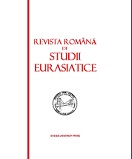THE CORRESPONDENCE BETWEEN AGRARIAN RITUALS OF THE TATARS AND THE DACOROMANIANS IN DOBRUJA
THE CORRESPONDENCE BETWEEN AGRARIAN RITUALS OF THE TATARS AND THE DACOROMANIANS IN DOBRUJA
Author(s): Mirela KozlovskySubject(s): History, Cultural history, Ethnohistory
Published by: Ovidius University Press
Keywords: folklore; traditions; customs; ethnic communities; ethnomusicology
Summary/Abstract: Through field research conducted in Dobruja area, I collected information and materials showed that for all ethnic groups studied - Dacoromanians, Aromanians, Meglenoromanians and Tatars, the family played an important role in preserving identity. This was strengthened especially if education and religious services were held in their mother tongue. Preservation and transmission of traditions and customs were definitely performed if the family lived in the countryside, less willing to turn to modernism. In traditional communities, such as the Tatars, the family is the only form of social organization. While resistance to assimilation process in the majority group, is primarily the merit of women (mothers or grandmothers) who perpetuated the language and customs of the Tatar community.As it is natural, also in the creation of traditional Dobrujans Tatars there are customs and habits of transition from one year to another, linked to agro-pastoral timing of the life cycle, to invoke the rain, curative etc. All of these have resisted so far, even if their original meanings were largely lost, and their origin has become obscure and some items were modernized. However, their persistence demonstrates that ethnic Tatars still need them and identify with them.I will present in this paper two agrarian rituals that take place in spring and are dedicated to the god of vegetation and a fertility custom. The two agrarian rituals are Nawrez (Nevruz) and Hîdîrellez, and the fertility custom is Peperuda.In the sixties of the last century these traditional practices were in a dormant state. Even if they were given uniqueness among the majoritary Dacoromanians, they were forgotten while others were kept in the collective memory of the community being revived and practiced since the first years after the events of 1989.
Journal: Revista Română de Studii Eurasiatice
- Issue Year: 12/2016
- Issue No: 1+2
- Page Range: 175-184
- Page Count: 10
- Language: English

